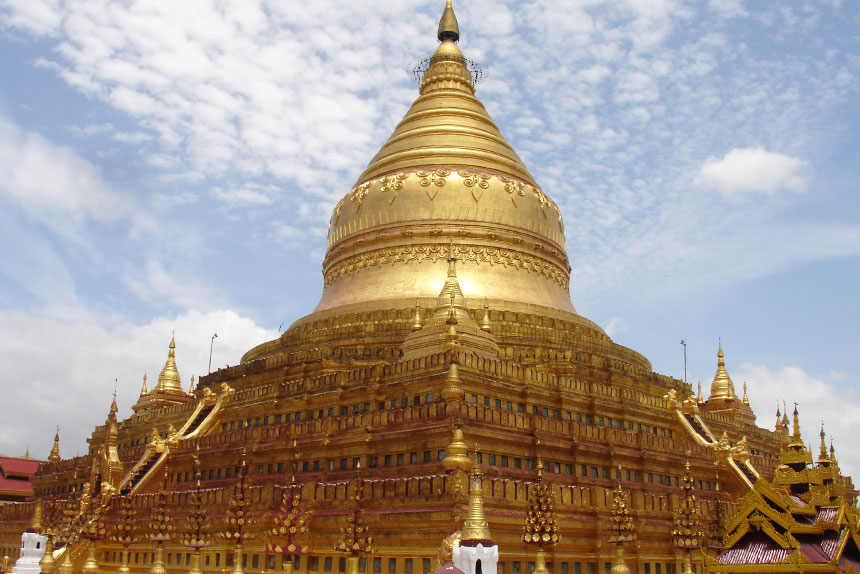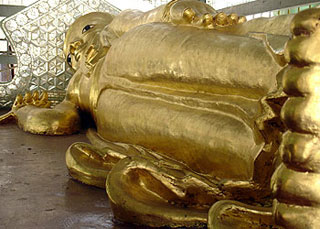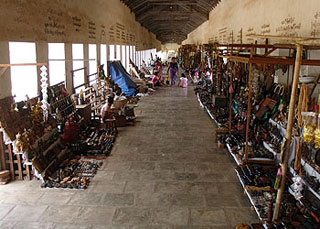Shwezigon is one monument among the four main significant buildings of Bagan. Shwezigon was built as the most important reliquary shrine in Bagan. a centre of prayer and reflection for the new Theravada faith King Anawarahta had established in Bagan. The pagoda is standing between the village of Wetkyi-in and Nyaung U. It is a beautiful pagoda and was commenced by King Anawrahta but not completed until the reign of King Kyanzittha (1084-1113). King Kyanzittha was thought to have built his palace nearby.
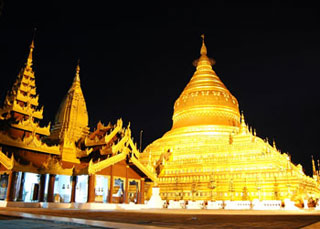
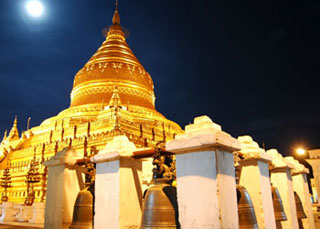
History
It was known that. the Shwezigon was built to enshrine one of the four replicas of the Buddha tooth in Kandy. Sri Lanka. and it was to mark the northern edge of the city. The other three tooth replicas were enshrined in other three more pagodas. The second tooth replica went to Lawkananda Pagoda. a smaller pagoda to the south end of the city. Then the third replica went to Tan Kyi Taung (Tant Kyi Hill) Pagoda. a pagoda on the western bank of the Ayeyarwady River. The last one was enshrined into Tu Yuan Taung (Tu Yuan Hill). a pagoda on the summit of a hill 32 km to the east.
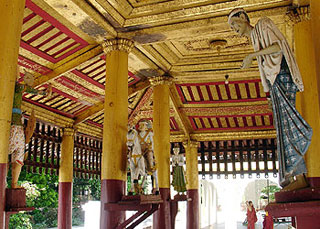
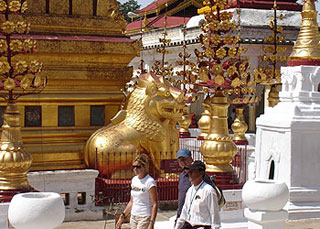
The pagoda’s graceful bell shape became a prototype for virtually all later pagodas all over Myanmar. The gilded pagoda sits on three rising terraces. Enameled plaques in panels around the base of the pagoda illustrate scenes from the previous lives of the Buddha. also known as the 550 Jatakas. At the cardinal points. facing the terrace stairways. are four shrines. each of which houses a four-meter-high bronze standing Buddha. These bronze Buddha images are known to be the last survived images of the ancient time. Their left hands exhibit the vitarka or ‘exposition’ mudra while the right hands are held palm outward. fingers straight up. portraying the gesture of abhaya or ‘no fear’.
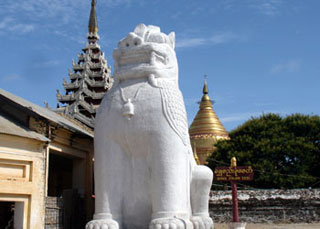
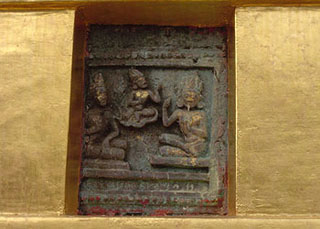
A10-cm circular indention in a stone slab near the eastern side of the pagoda was filled with water to allow former Myanmar monarchs to look at the reflection of the hti (or the tope umbrella of the pagoda) without tipping their heads backward (which might have caused them to lose their crowns). Visitors can view the bejeweled hti through a telescope. Surrounding the pagoda are clusters of zayats (rest houses) and shrines. some of them old. others more modern. though none of them are original.
In addition to ranking as one of the oldest pagodas in Bagan. Shwezigon is known as the site where the 37 pre-Buddhist nats (the spirits) were first officially endorsed by the Myanmar monarchy. Images of the 37 nats can be seen in a shed to the southeast of the platform. At the eastern end of the shed stands an original stone statue of Thagyamin (Sakra). king of the nats and a direct appropriation of the Hindu god Indra. This is the oldest known free-standing Thagyamin figure in Myanmar. Flanked by tigers representing her forest home. another small shrine in the south-eastern corner of the grounds is reserved for Mae Wunna. the guardian nat of medicinal roots and herbs. near the region.
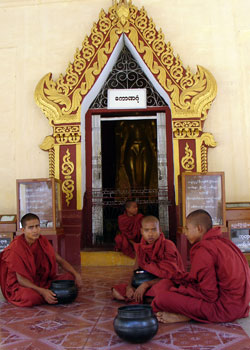
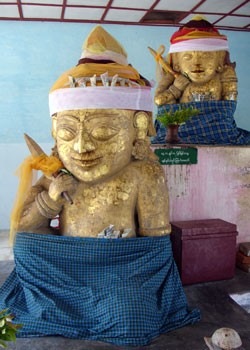
NINE REMARKABLE FEATURES OF THE SHWEZIGON PAGODA
- Even though its umbrella is massive. it is not held in place with iron cables.
- The great pagoda’s shadow never falls outside its boundary walls regardless of the time of day.
- The paper used in applying gold leaf when dropped from the upper lotus on the spire never drifts outside the boundary wall.
- However many people come to visit the pagoda. it is never becomes crowded inside the boundary wall.
- During the festival celebrated on the full-moon day of Tansaungmon. a rice offering will always have been made to the pagoda before anyone arrives.
- The sound of a drum beaten on one side of the pagoda cannot be heard from the other side.
- From a distance the pagoda appears to be standing on a hill.
- However much it rains. water does not accumulate in the courtyard of the pagoda.
- The khya-ya (medlar) tree at the south-east corner of the pagoda stays in bloom all year round.
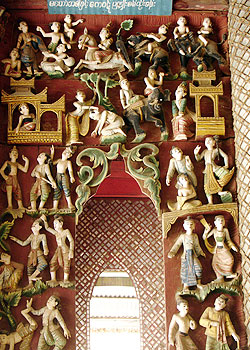
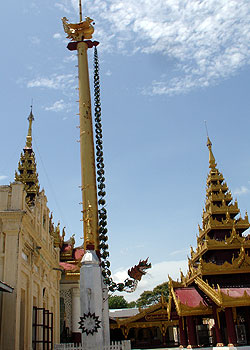
IN THE PRECINCT OF THE SHWEZIGON PAGODA
- Statue of an Arhat Maha Thera at the southern side of the precinct.
- Large golden alms bowls Wooden structure and spire on the eastern side of the precinct.
- A big golden lion at the south-east corner at the base of the pagoda.
- A big white-washed lion at the eastern entrance of the pagoda.
- A stone steed standing in the eastern image house Stone alms bowls surrounding the pagoda.
- A stone pillar on the southern precinct Stone plaques adorning on the second and third terraces of the pagoda displaying the 550 Jatakas of Buddha’s lives.
- Panet Thegu on the northwest corner of Shwezigon Pagoda.
- Replicas of Buddha’s foot prints on display in the Pagoda Museum.
- A reclining Buddha Statue on the south precinct.
- Su Taung Pyay Pagoda on the southeast of the precinct.
- A wooden prayer post called Tagun Taing.
- The real umbrella of Shwezigon donated by King Alaungpaya. on the east precinct.
- A stone statue of Dwarapala the guardian deity at the entrance of the eastern outer enclosure wall.
- Images of two guardian nats. father and son. on the southeast corner.
- A small bronze bell donated by King Bayint Naung on the southern precinct.
- The big bronze bell cast in A.D 1557 and dedicated to Shwezigon Pagoda by King Bayint Naung.
Travel Tips
- Entry fees are taken at the entrance and also cameras and videocams have to pay to carry around and take pictures. Entry fees is 5$ per person.
Note :
Nowadays. there is a legend saying that if one visit those all four tooth replicas in a day. it can bring one prosperity and luck.

